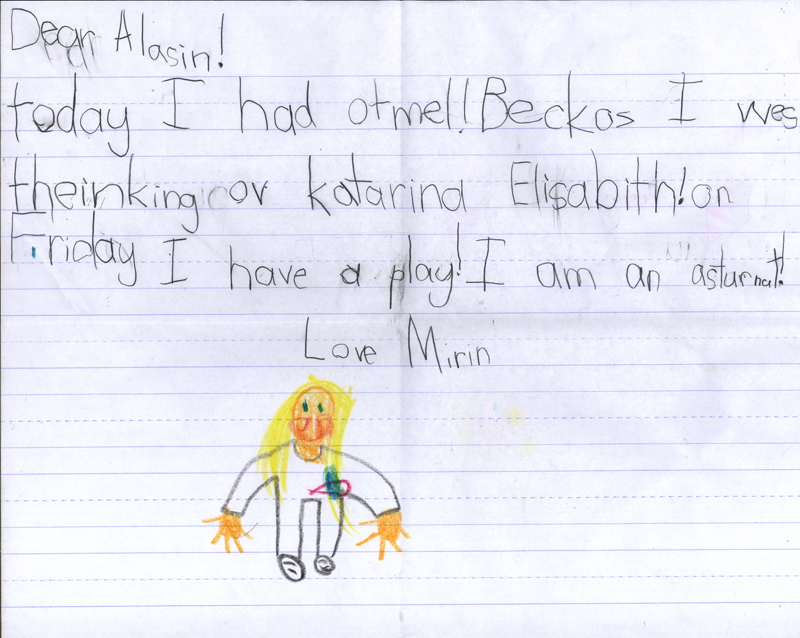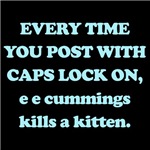 Today’s entertainment comes by way of Red Zinny at Café Press, who will happily sell you a t-shirt sporting this slogan, which made me laugh out loud!
Today’s entertainment comes by way of Red Zinny at Café Press, who will happily sell you a t-shirt sporting this slogan, which made me laugh out loud!
Monthly Archives: July 2008
Mount Auburn Cemetery: Paradise Found
Alison Morris - July 14, 2008
 Gareth and I live just a stone’s throw from one of my favorite spots in the Boston area: the Mount Auburn Cemetery in Cambridge. When out-of-town guests come a-calling and I mention that I can’t wait to take them to my favorite cemetery they look at me askance, until they experience the place for themselves — then they invariably want to go back again.
Gareth and I live just a stone’s throw from one of my favorite spots in the Boston area: the Mount Auburn Cemetery in Cambridge. When out-of-town guests come a-calling and I mention that I can’t wait to take them to my favorite cemetery they look at me askance, until they experience the place for themselves — then they invariably want to go back again.
Founded in 1831, Mount Auburn was the first large-scale designed landscape open to the public in the United States. The cemetery’s website explains its origins this way:
"Our founders believed that burying and commemorating the dead was best done in a tranquil and beautiful natural setting at a short distance from the city center. They also believed that the Cemetery should be a place for the living, ’embellishing’ the natural landscape with ornamental plantings, monuments, fences, fountains and chapels. This inspired concept was copied widely throughout the United States, giving birth to the rural cemetery movement and the tradition of garden cemeteries. Their popularity led, in turn, to the establishment of America’s public parks."

Today Mount Auburn is this lush oasis in the city, filled as it is with towering trees, flowering bushes, and (of course) the remains of many famous New Englanders. I have been there in every season, and can attest to its year-round beauty. AND the enormity of its size. AND the beauty of its plants and flowers, like these Bluebells.

Only living plant specimens are allowed here, unless you count those carved or in relief, like these roses:

Each time I visit Mount Auburn I discover something I hadn’t noticed before, and quite often my discoveries are tied, in some way, to BOOKS.

The carved headstone above is one I discovered on a recent afternoon visit, during which I also took a couple shots of Henry Wadsworth Longfellow‘s grave to share with all of you.


Longfellow is just one of the many, many famous people buried in Mount Auburn, many of whom were writers and poets. AND publishers, as it turns out. Just seconds after I took this shot, below…

I turned around, mounted a step, and came upon this sad scene, of decapitated tombstones…

and this explanation for it, below. (Clicking on the photos will take you to images large enough for you to read.)
Yep. Gareth and I had stumbled right onto the burying place of Charles C. Little and James C. Brown, of Little, Brown fame. As the signs explain, a large tree branch fell on this the spot during a wind storm in March, doing significant damage to the Brown lot…

and slight damage to the Little lot.

Conservators are currently working on repairs and restorations to both. (And they’re more than happy to accept donations toward those efforts.) If you are ever in the Boston area (or already are), I recommend heading over to Mount Auburn to check on their progress AND (more importantly) to just enjoy the beauty of scenes like this…

and plants like this (Lilly of the Valley).

The illustrators among you might enjoy making a sketch or two of spots like this (which is exactly what Gareth’s doing below).

The designers among you would probably appreciate the artistry of patterns like this:

And you typographers are in for a few treats too. As are those of you in search of names for book characters.

Of course, if that’s not enough for you, there’s always the option of visiting the graves of Winslow Homer, Nathaniel Bowditch, Fannie Farmer, and Isabella Stewart Gardner (below), just to name a few.

(All of the photos in this post have been saved to my ShelfTalker Flickr page, where you can view them larger if you’d like.)
Have you got a favorite cemetery near you? If so, please share. If not, please make a point of visiting this one so you won’t feel left out.
Permanent Ink: Tattoos for Readers
Alison Morris - July 10, 2008
 I’m very entertained by the idea of this temporary tattoo booklet from PatinaStores.com. You can view a close-up of one of these beauties at Evil Mad Scientist Laboratories or click on the photo below to see smaller versions of all the tats to be found in this booklet.
I’m very entertained by the idea of this temporary tattoo booklet from PatinaStores.com. You can view a close-up of one of these beauties at Evil Mad Scientist Laboratories or click on the photo below to see smaller versions of all the tats to be found in this booklet.
Most of the tattoos in this booklet, though, aren’t half as interesting or entertaining as the real-world booklover tattoos I’ve seen. Max from Where the Wild Things Are brandishes a fork on my friend Tim Scarlett’s ankle. My pal Janet Potter has a beatiful ampersand on her hip. As I mentioned once before, lexicographer/editor Steve Kleineder has the phonetic alphabet chart tattooed on his back. (Not that I’ve seen it, mind you.)
A search for "tattoos" and "book" on Flickr yields a clever Vonnegut salute, and (holy cow!) a winner in the Connect-the-Dots category. There’s also an open book, splayed pages, books on a shelf, a fiery typewriter, a reference to To Kill a Mockingbird, a tribute to Snape, Harriet the Spy (!), an ant traveling by tesseract, another ampersand fan, and (my favorite) an image adapted from the cover of Ann Fadiman’s Ex Libris.
We book lovers are so attached to the objects of our passion that it make sense to me that some of us would want to wear those objects in a literal, permanent fashion. Are you one of those folks? Or do you WISH you were brave enough to be? If so tell us about your real-life book tattoos, dream-life book tattoos, or book tattoo sightings.
A Whole Lotta Lincoln Going On
Alison Morris - July 9, 2008
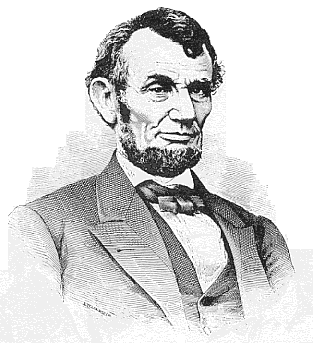 If you’re a big Abe Lincoln fan, then this could be your year. February of 2009 will mark the 200th year since old Abe’s birth, prompting towns all over the U.S. to host Lincoln Bicentennial celebrations and publishers to roll out the Lincoln lore like there’s no tomorrow.
If you’re a big Abe Lincoln fan, then this could be your year. February of 2009 will mark the 200th year since old Abe’s birth, prompting towns all over the U.S. to host Lincoln Bicentennial celebrations and publishers to roll out the Lincoln lore like there’s no tomorrow.
Think I’m exaggerating? Pasted below are the covers (where I could find them) of just THIRTEEN of the many, many NEW trade books on Abraham Lincoln that will be published between now and this February. These are in addition to the many, many new library edition books that will be appearing this fall, and the many, many former hardcovers about Lincoln that will soon be appearing in paperback for the first time, OR the paperbacks long out of print that will soon be reissued. There are even at least 3 new Little Dover Books ($1.50 each) coming out this December as part of the Lincoln craze.
Most (if not all) of these thirteen books featured below ones I’ve purchased for our store (or will be purchasing for our store), because most are by well-known authors and most will get a great deal of publicity. But as much as I’d like to believe that every customer in town will come racing in the door to buy Lincoln books, I don’t. And even if MOST of them came racing in the door, what are the odds of them needing 13 different new hardcover books to choose from? What are the odds of them (unless they’re teachers focusing on Civil War-era history) buying up more than 1 or 2 titles? Is there anyone out there who will actually be buying all 13 of these books? VERY doubtful.
It’s not like Lincoln is a new subject for books. Lincoln’s birthday comes around every year in February, and I’ve yet to see a true "run" on Lincoln books yet. It’s not like we’ve suddenly "discovered" a hidden treasure box of information about the guy, either, or that libraries are completely lacking in Lincoln-themed titles.
BUT, so it goes. And I’m not knocking the quality of the books that are forthcoming, as WOW. A lot of them are fantastic. And there’s quite a variety here. But I do worry that having so many Lincolns could mean a lot of publishers lose Washingtons, as there’s just too much competition in the mix.
Here you go: THIRTEEN forthcoming Lincoln titles, in order of publication month. Which of these are your favorites? Which older titles Lincoln titles do you think stand out from the pack? What forthcoming books have I missed here that you think are worth noting? Post a comment and let us all know.
Coming from Henry Holt Books for Young Readers in August 2008, Abraham Lincoln Comes Home written by Robert Burleigh and illustrated by Wendell Minor.

Coming from Albert Whitman in August 2008, Abe Lincoln Loved Animals written by Ellen Jackson and illustrated by Doris Ettlinger.

Coming from Viking Children’s Books in September 2008, Mr. Lincoln’s Boys written by Staton Rabin and illustrated by Bagram Ibatoulline.

Coming from Henry Holt Books for Young Readers in September 2008, Lincoln and Douglass: An American Friendship written by Nikki Giovanni and illustrated by Bryan Collier.

Coming from Feiwel and Friends in September 2008, Lincoln Shot: A President’s Life Remembered written by Barry Denenberg and illustrated by Christopher Bing.

Coming from Walker and Company in September 2008, Lincoln Through the Lens: How Photography Revealed and Shaped an Extraordinary Life by Martin W. Sandler.

Coming from Schwartz & Wade Books in September 2008, Abe Lincoln Crosses a Creek: A Tall, Thin Tale (Introducing His Forgotten Frontier Friend) written by Deborah Hopkinson and illustrated by John Hendrix. (Of the titles listed here, this one has the least to offer in the way of factual information, but I give it the highest rating for sheer entertainment value. What a FUN, funny book!)

Coming from Schwartz & Wade Books in October 2008, The Lincolns: A Scrapbook Look at Abraham and Mary by Candace Fleming.

Coming from Hyperion in October 2008, Abe’s Honest Words: The Life of Abraham Lincoln written by Doreen Rappoport and illustrated by Kadir Nelson.
Coming from Scholastic/Blue Sky Press in February 2009, Our Abe Lincoln by Jim Aylesworth, illustrated by Barbara McClintock.
Coming from Scholastic Press in February 2009, Chasing Lincoln’s Killer by James L. Swanson.

I couldn’t find cover images for the following titles. For now you’ll have to use your imaginations!
Coming from National Geographic Children’s Books in December 2008, Mrs. Lincoln’s Dressmaker: The Unlikely Friendship of Elizabeth Keckley and Mary Todd Lincoln by Lynda Jones.
Coming from Collins in December 2008, What Lincoln Said written by Sarah L. Thompson and illustrated by James E. Ransome.
Coming from Simon & Schuster in January 2009, My Brother Abe: Sally Lincoln’s Story written by Harry Mazer.
Why No YA Books on High School Summer Reading Lists?
Alison Morris - July 8, 2008
Last week I blogged about my appreciation for the summer reading list assembled by the English department of local Weston High School. Several readers of that post correctly observed (with dismay) that the Weston list is lacking in young adult literature. Sadly, this is not unusual and I agree that it’s a disappointment. Unfortunately that’s the norm with MOST of the school lists that I see, especially the lists created by a school’s English department. (Often those created with the input of a school librarian have a more YA-inclusive mix.)
As much as those of us in the book business might like to think otherwise, a LOT of high school English teachers are still tied to the mind-set that YA books are not true "literature." (I recently had a school turn down an offer for a free school visit with a VERY prominent, beloved, talented young adult author for pretty much this very reason.) The teachers who have this mind-set rarely use YA literature in their classroom teaching except in cases where they are working with students who are "reluctant" readers or students reading below grade level.
Of course there are plenty of teachers who know, love, and are current with their knowledge of young adult books. But many of them are stuck in departments with the aforementioned way of thinking and/or unable to find many ways to work anything into their curriculum that isn’t going to appear on the standardized tests they’re so often expected to "teach to" nowadays.
But it’s summer! Summer reading is supposed to be fun, right? Shouldn’t that negate the whole "are these books literature?" debate? That depends on whom you ask. Many teachers and librarians have been moving toward the notion that summer reading should, above all else, be designed to keep kids reading (Period.) and that it should therefore be less about educational value than about sheer pleasure. But others believe the intent of summer reading is to keep kids in "learning mode" or keep them "working" throughout the summer, so that the transition back to the work of the school year comes as less of a shock.
I’m forever surprised to note that parents often appear split along the same line. Many of those who consider their teenagers especially "gifted" (which as any bookseller will tell you, is MOST customers) often turn up their noses at high school reading lists that include a large number of young adult novels, on the assumption that those books are not "challenging" enough for their oh-so-smart progeny.
Also, whether they think their kids are brilliant or not, I’ve heard many a parent express frustration with school lists on which they recognize few or none of the titles being assigned. There is apparently comfort for these folks in seeing the same titles they once slogged through (or in some cases genuinely enjoyed) appear on the lists that their kids are now being asked to read. A lack of familiar or "classic" titles often prompts remarks about the "dumbing down" of education these days, or the lack of commitment to "serious literature." As for how teenagers generally respond to this? I have seen many a teen roll their eyes when Mom or Dad tells them the story of how The Red Badge of Courage, say, was a life-changing book for them when THEY had to read it in high school. Sometimes the kid can be persuaded, but more often than not, a parent has just marked that book for the "miss list."
The best summer reading lists, I believe, should include a solid mix of books published for young adult readers and books published for adults, with an emphasis on ENJOYING reading. I think lists should include books that will appeal to reluctant readers AND books that will catch the eye of those kids who genuinely seek a challenge (or who just want to impress college admissions counselors). A list NEEDS to include newer books and (really, truly) the lists need to include a brief summary and/or review. (With the exception of the bit about including young adult novels, the Weston High School list hit all of these marks, which is why I thought it a good list to highlight last week.)
Why the need for NEW books: No teen wants to be assigned the exact same list of books that his older brother was assigned five years earlier, no matter how good all the books on that old list may have been. Static lists send the message that reading is static — that books get old, that time never marches forward (which is how many kids feel when they sit through a less-than-engaging class and watch that minute hand move at a snail’s pace). Static lists also have another pitfall: they often contain multiple books that are now out of print. Parents hate this. Kids hate this. Booksellers hate this. I haven’t polled librarians on this matter, but my guess is they aren’t overjoyed, either. After all, what are the odds of their having enough copies of the one out-of-print book on that recommended (or worse — required!) list to actually satisfy the hundreds of students at X high school?
Why the need for a summary and/or review: Try looking over a list of 50+ titles many of the lists of recommendations I see are at least that long), on which maybe 10 titles are ones you’ve actually heard of and just 2 of those have ever sounded appealing, then figure out which books YOU want to read. You can’t do it, can you? SO, your next options as follows:
1. Go online with that school reading list and look up EVERY SINGLE TITLE to read what they’re about and THEN choose a couple that appeal to you.
2. Go to your local library or bookstore and ask a librarian or bookseller to show you the books on that list. WORST case scenario here: The librarian or bookseller you’re speaking to isn’t familiar with or fond of any of the books on your list, meaning you are in for a LONG afternoon of browsing and choosing from the books that are on hand (which may not be many if you’ve got an outdated list of suggestions or if the rest of your school has beaten you to the punch). BEST case scenario here: You are blessed with the assistance of a librarian or bookseller who glances at your long list and says, "OOH! I love this one! And this one!" then steers you in the direction of a handful of appealing-sounding choices, providing you with synopses and reviews along the way.
In EITHER of these scenarios the process of choosing books feels like WORK, which certainly doesn’t send a very positive message. Even in the best case scenario above, a teenager often feels frustrated (at least before they’ve been given assistance) because they feel helpless. They’re adrift in a sea of embarrassing cluelessness and (horror of horrors!) they have to ASK FOR HELP.
If, however, a teenager is given a list with an enticing mix of new titles and familiar classics on which each title is accompanied by some enticing synopsis or plug, they have then been armed with information that makes it possible for them to choose for themselves. They can still, of course, ask a bookseller or librarian, "Which of these would you recommend?" but that feels a lot less scary than asking, "Can you help me find these 50 books and do you know anything about them?"
But back to the topic that began this post — the lack of YA books appearing on high school reading lists. I’d love to hear how others think we can reverse this trend.
The best ways I know of, personally, to accomplish this are 1) to educate teachers and school librarians about the best quality YA books out there and then trust that they’ll want to use those books wit
h
their students or at least recommend that their students read them, and 2) introduce high school students to great YA books, encourage them to tell their teachers about them, and hope for a sort of "trickle up" approach. Working on such an individual level, though, is obviously going to bring about change in a very slow fashion. Anyone have any ideas that would accomplish things at a faster pace or at least reach a broader audience? If so, please comment.
A Gold Star and Best Wishes for a New Bookstore
Alison Morris - July 7, 2008
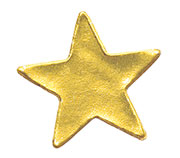 In honor of last Friday’s Independence Day celebrations, I thought it only right that I give a salute to an independent bookstore, as independence is what we’re all about!
In honor of last Friday’s Independence Day celebrations, I thought it only right that I give a salute to an independent bookstore, as independence is what we’re all about!
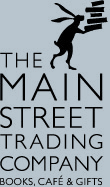 When I saw an announcement of the opening of The Mainstreet Trading Company in last week’s Children’s Bookshelf, I read it aloud to Lorna and Lisa, who were within earshot, and a fight then erupted over which of us should be allowed the opportunity to move to Scotland and work for this lovely-sounding store. Our interest was further piqued by a peek at the store’s wonderfully appealing logo, which screams "sweet, smart and sophisticated" — three qualities I admire in a kid-friendly independent bookstore.
When I saw an announcement of the opening of The Mainstreet Trading Company in last week’s Children’s Bookshelf, I read it aloud to Lorna and Lisa, who were within earshot, and a fight then erupted over which of us should be allowed the opportunity to move to Scotland and work for this lovely-sounding store. Our interest was further piqued by a peek at the store’s wonderfully appealing logo, which screams "sweet, smart and sophisticated" — three qualities I admire in a kid-friendly independent bookstore.
Co-owner Rosamund de la Hay was most recently the children’s marketing director for Bloomsbury Books, where she oversaw the launch and promotion of a series you might have heard of, about a boy wizard named Harry Potter? In other words, she ought to know a thing or two about how to draw readers to good reading.
An article in the Southern Reporter quotes Rosamund saying that she and her husband Bill are feeling "exhilarated, exhausted, excited and plain terrified.” To them I send my sincerest best wishes (as I do to anyone else opening bookstores out there) and award them a gold star for a cracking good logo, for a nice solid-sounding store name, and for bravery.
Anyone interested in following their lead? If so you might want to look at the ad for ReadingLasses Bookshop-Café (and attached living quarters!) in Wigtown, Scotland, which is currently for sale. (Thanks to Susan Fox of Red Fox Books in Glens Falls, N.Y. for the link!)
Fold Your Own Book
Alison Morris - July 3, 2008
Sadly, the wonderful Origami Now! exhibit I blogged about last year closed this month at the Peabody Essex Museum in Salem, Mass., after a wonderful year-long run. I wound up visiting Origami Now! three or four times this year, as the PEM has become one of Gareth’s and my favorite places to take out-of-town guests. My appreciation for the exhibit grew with each visit.
As a little salute to the art of paper-folding AND the objects of our collective affection, I give you this: a video of someone folding a lovely little origami book, accompanied by a lovely little Nick Drake tune.
Wall Scrawl: You’d Be So Nice to Come Home to
Alison Morris - July 2, 2008
Here’s another question that’s generated many an entertaining (and creative) response from visitors to our store’s "graffiti stall." Have at it!
If you could take up residence in (as in, live inside the plot and setting of) any one book, what title would you choose?
Another Note from My Young Pen Friend
Alison Morris - July 1, 2008
 In March I blogged about the note that my pen friend Mirin (a kindergartner) sent me as a thank you for The Luck of the Loch Ness Monster. Apparently that book has really stayed with her, as she send me ANOTHER lovely letter recently, in which she mentioned it again, this time tying it to something different than she did in her first note. Her new letter came enclosed in this LOVELY card, which (in addition to depicting the sun, a cat, a house, and a vase) also shows a book with the letters "TE" (short for "The End," of course). The book reflects this fact, which Mirin recently shared with her mother: "Alison and I are book-friends."
In March I blogged about the note that my pen friend Mirin (a kindergartner) sent me as a thank you for The Luck of the Loch Ness Monster. Apparently that book has really stayed with her, as she send me ANOTHER lovely letter recently, in which she mentioned it again, this time tying it to something different than she did in her first note. Her new letter came enclosed in this LOVELY card, which (in addition to depicting the sun, a cat, a house, and a vase) also shows a book with the letters "TE" (short for "The End," of course). The book reflects this fact, which Mirin recently shared with her mother: "Alison and I are book-friends."
No, I didn’t coin the term "book-friend" — Mirin did. But can you imagine a better friend to have?
Mirin’s most recent letter to me is pictured below. In case you can’t read her EXCELLENT penmanship or decipher her invented spellings, here’s a translation:
"Dear Alasin! [sic] Today I had oatmeal because I was thinking of Katarina Elizabeth [the main character in The Luck of the Loch Ness Monster, who HATES oatmeal]. On Friday I have a play! I am an astronaut! Love, Mirin"
 In response to this wonderful letter, I have sent my "book-friend" a copy of The Astronaut Handbook (Knopf Books for Young Readers, June 2008) by the always entertaining Meghan McCarthy, as I think any astronaut should own a copy, whether she’s rocketing her way toward the moon OR about to embark on the adventure of first grade. I can’t wait to hear what my "book-friend" thinks of this one!
In response to this wonderful letter, I have sent my "book-friend" a copy of The Astronaut Handbook (Knopf Books for Young Readers, June 2008) by the always entertaining Meghan McCarthy, as I think any astronaut should own a copy, whether she’s rocketing her way toward the moon OR about to embark on the adventure of first grade. I can’t wait to hear what my "book-friend" thinks of this one!




